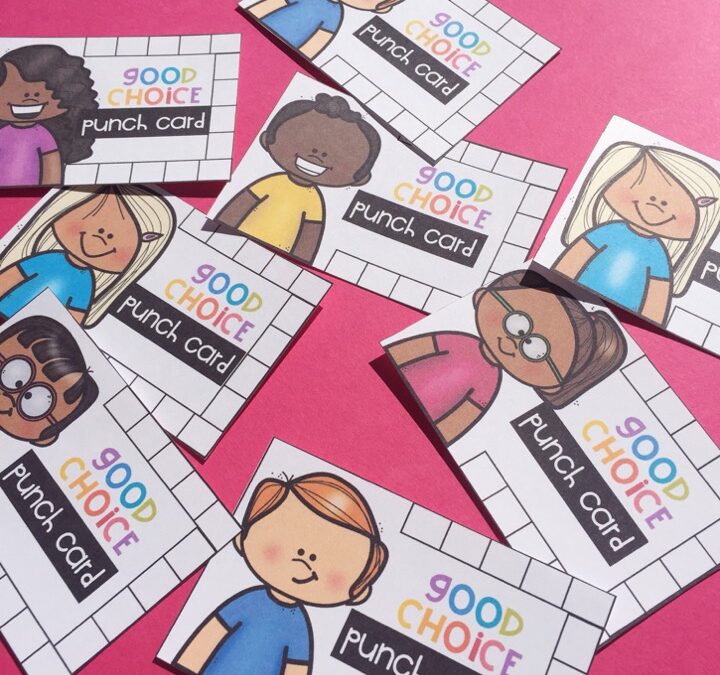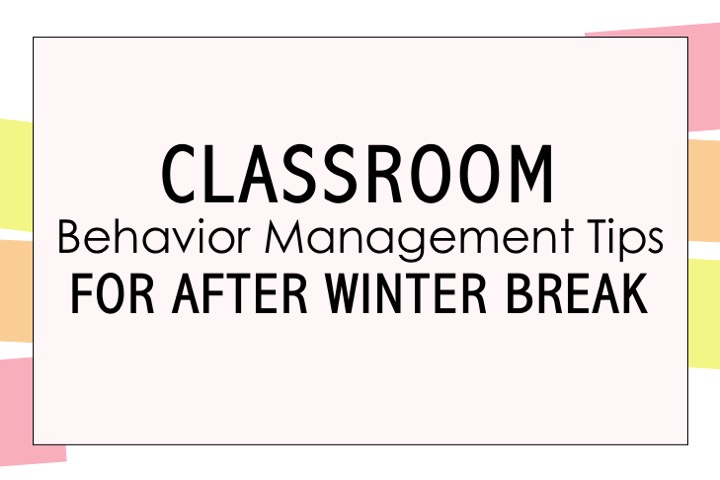
I love the new year because there are so many new beginnings. And that is true in the classroom with classroom behavior management. You can come in fresh and change things around if you need to. Or you can go back and set new high expectations. So today I’m sharing classroom behavior tips for after winter break.
But before we get started. Did you know I love to help teachers give math instruction to their students in a fun and meaningful way?
No more repetitiveness with math fact practice for students.
No more tears over the anxiety timed tests give.
I’m sharing all of my best tips for teaching math facts in a way that sticks in my free workbook for 1st and 2nd grade teachers.
Download my free workbook, The 7 Steps to Ensure Math Fact Fluency here.
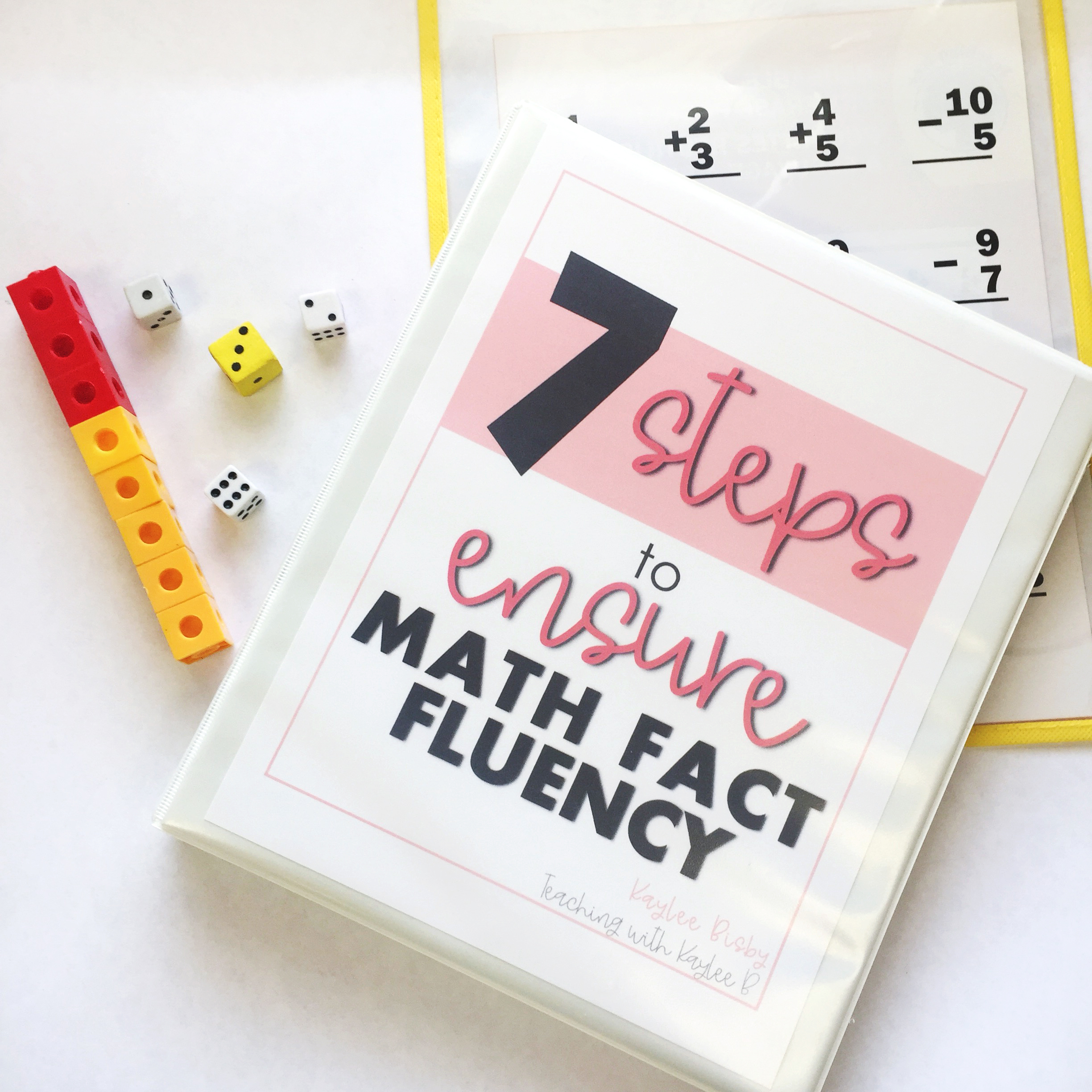
Okay, let’s get started with the best classroom behavior management tips for after winter break.
Classroom Behavior Management
When coming back from a break, I like to keep three principles in mind: set high expectations, be consistent, and follow through. I even like to write them down on a sticky note and leave it in a place where I see it often.
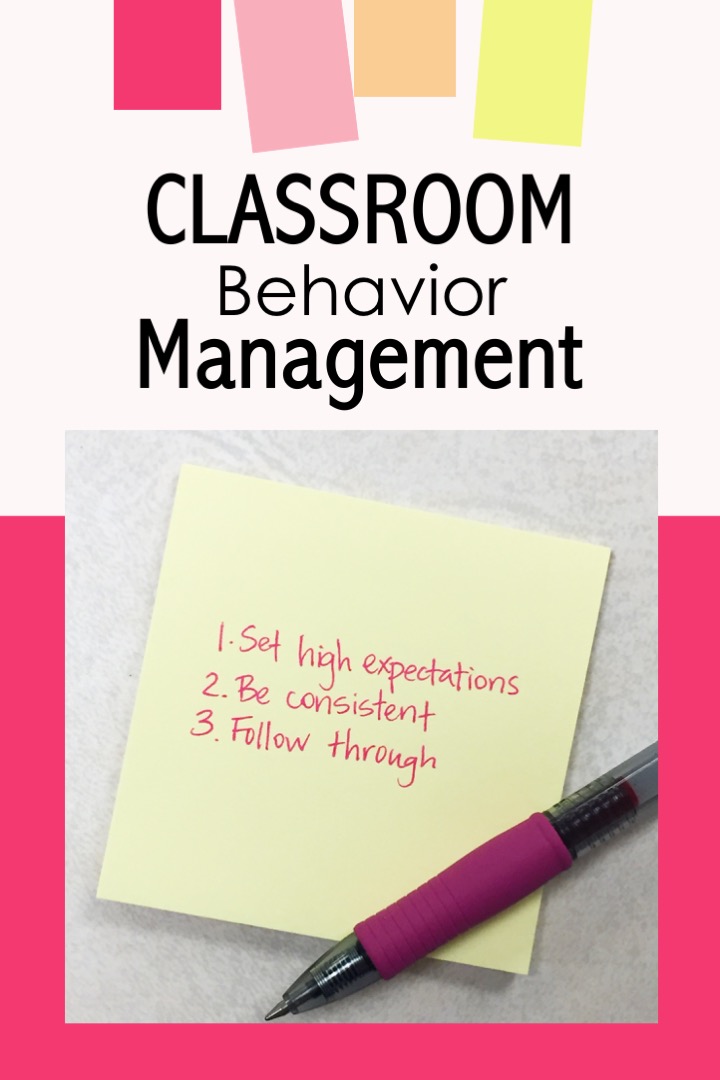
Give yourself daily reminders of what you want your classroom behavior management to look like in your classroom.
Let’s go over each one of these classroom behavior management tips and see how they can be applied to your classroom.
Set High Expectations
Students need to know what is expected of them. What is allowed and what is not allowed in your classroom? This is a good time to change anything you haven’t liked since the beginning of the school year. To get my students on board and committed to rules or values in my classroom I like to make a Classroom Agreement.
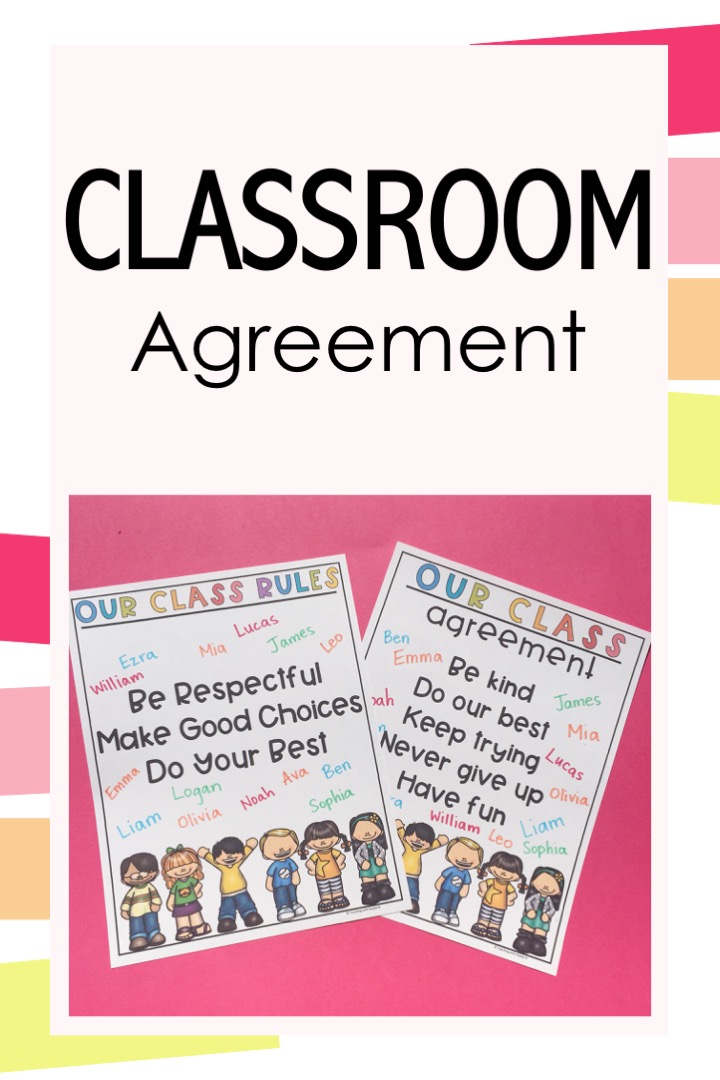
Setting high expectations is a key to success when it comes to behavior management in your classroom.
I love to make the Classroom Agreement with my students. We come up with values we will always live by in our classroom. These are values such as work hard, always try your best, or be kind to everyone.
Then I type it up with my students and then have them sign it. I let my students know that by signing that page, they are committing to following those values.
To learn more about creating a Classroom Agreement with your students read this blog post here.
To get access to the Classroom Agreement Template I use in my classroom, click here.
Be Consistent
To improve classroom behavior, you must be consistent. This can often be hard. Sometimes I’m exhausted and just want to let things slide.
But I have found what helps me, is making sure my routines and procedures are running smoothly.
If I didn’t like how my students moved from their desks to our carpet spot, I can be consistent and say we don’t move to the carpet like that. I remind students the right way, and then have them try it again until it is right.
This is also a good time to change any routines or procedures that you want in your classroom.
I like to review key routines and teach my students new ones by using my Classroom Procedures and Routines PowerPoint.
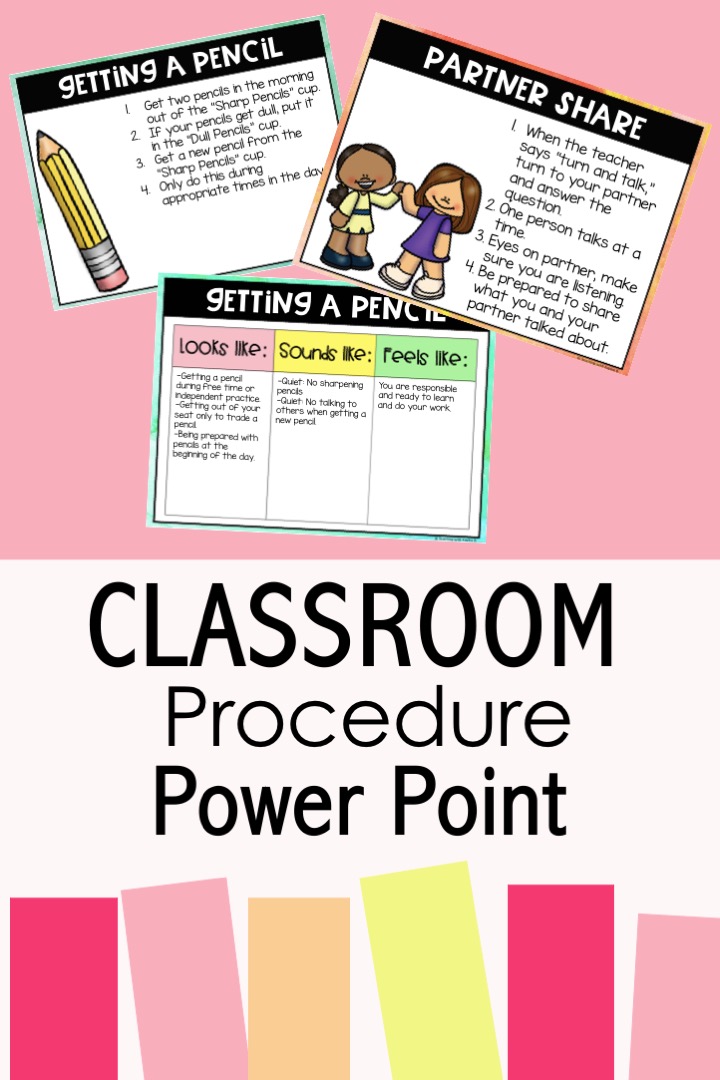
A great way to be consistent with classroom behavior management is using a classroom procedures powerpoint.
I have the steps to each procedure typed up. I display it for students. I read each step and model it for students. Then I have students practice each step.
After students have practiced, we talk together about how the procedure looks like, sounds like, and feels like.
I love this because it helps students know what is expected and it helps me be consistent.
Find my Classroom Procedures and Routines PowerPoint here.
Follow Through
The key part of all of this, is to follow through. You must show your students you mean what you say. That the values and rules in your classroom count.
I like to do this with logical consequences.
This means if a student breaks something in the classroom, they need to fix it.
If they are talking to a neighbor when it’s an inappropriate time, I move them to a different spot in the classroom.
If a student doesn’t finish their work, they do it during our Fun Friday time.
There are also positive logical consequences. Like if students use their time wisely to finish their work, they get their whole Fun Friday time to play games. Check out this blog post for more ideas on how Fun Friday can help with behavior management: 3 Fun Friday Ideas For Classroom Management
Using logical consequences allows students to learn from their behaviors, and allows you to follow through.
Classroom Behavior Management Plan
During this time you may want to consider creating a Classroom Behavior Management Plan, or tweaking the one you have been using.
For my classroom behavior management plan, I like to have 3 components for behavior incentives. These are the rewards I give students for good behavior. I like having one for whole class, small group, and individually for students.
Let’s take a look at these 3 components.
But before we do, have you downloaded my free workbook yet? It’s perfect for 1st and 2nd grade teachers looking for actionable steps to help their students get to math fact mastery. Download it here.
Whole Class Behavior Management Incentives
When it comes to whole class behavior management, I like to get my students involved in the rewards they are working towards. I have lots of options for rewards like extra science, extra recess, free time, etc. They vote on which one they want.
Then I display it on our whole class rewards system. The reward acts as the center of our flower. Then students work towards adding petals to the flower. When they get ten petals, they earn the reward.
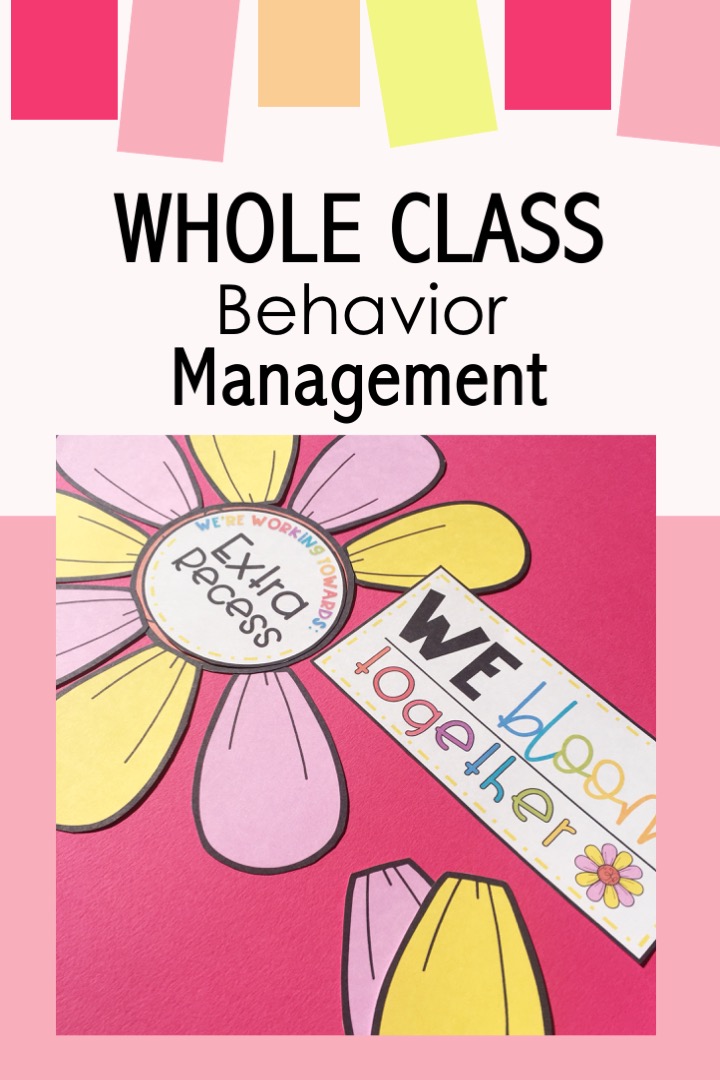
Allow your students to work together for positive behavior management.
When giving students the petals, I really make them earn them. I’m looking for specific things in order to give the petal. I have these requirements listed up on the board for me and my students to refer to often.
To learn more about the Whole Class Rewards System I use in my classroom, read this blog post here.
To get one to use in your classroom, click here.
Small Group Behavior Management Incentives
I also find that it is helpful to reward students in small groups. This usually plays into how your desks are arranged in your classroom.
I have my desks in 3 rows. So we do row points.
When a row shows they transition quickly, or all follow directions or expectations, I give them a row point.
Then this helps the other rows get back on task.
At the end of the week, we add up all the row points. That row with the most points gets a ticket for a drawing for a small prize
Individual Behavior Management Incentives
I also want to reward students for doing good things just for doing good things. When I see a student clean up the floors without being asked, I’ll give them a punch on their “Good Choices Punch Card.”
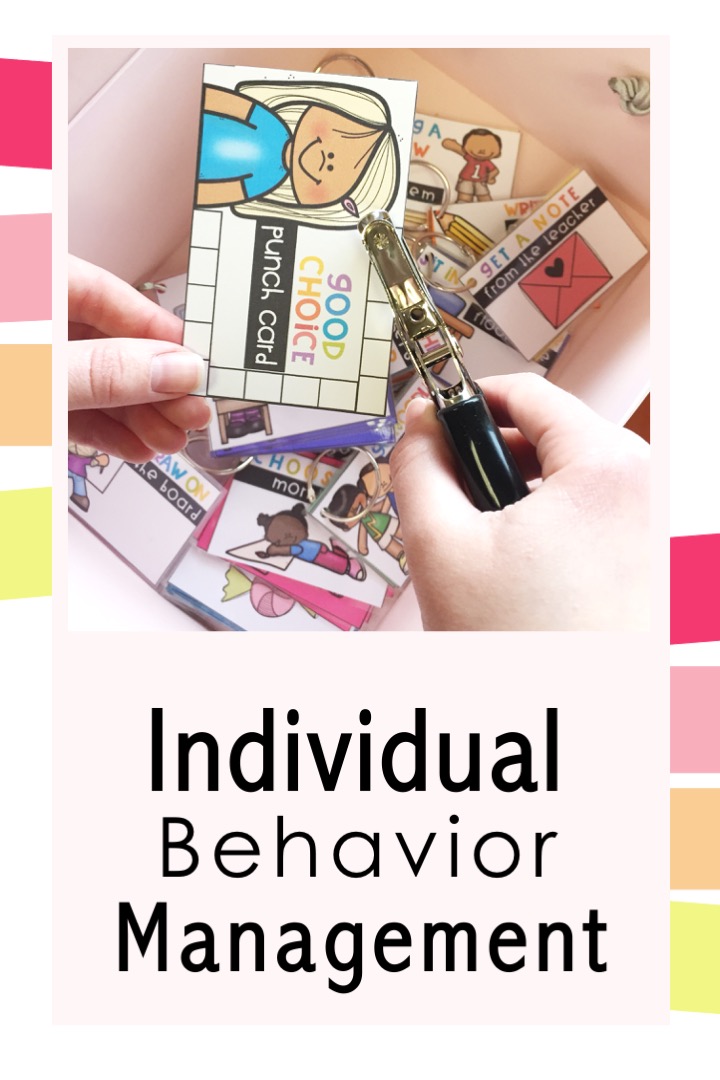
Rewarding students individually will greatly impact classroom behavior management in your classroom.
Or I might see a student following expectations while those around them are not. I’ll give them a punch on their punch card.
Or I might see a student do something extra kind to a classmate, I’ll give them a punch on their card.
I have students keep their punch cards in their desks and I also keep my whole punch on me. So rewarding students doesn’t take much instruction time.
When a student gets their punch card filled up, they get to choose a Student Rewards Coupon. These are small but special things that students love. Things like sitting in the teacher’s chair, or writing with our special pen, or getting a note from the teacher.
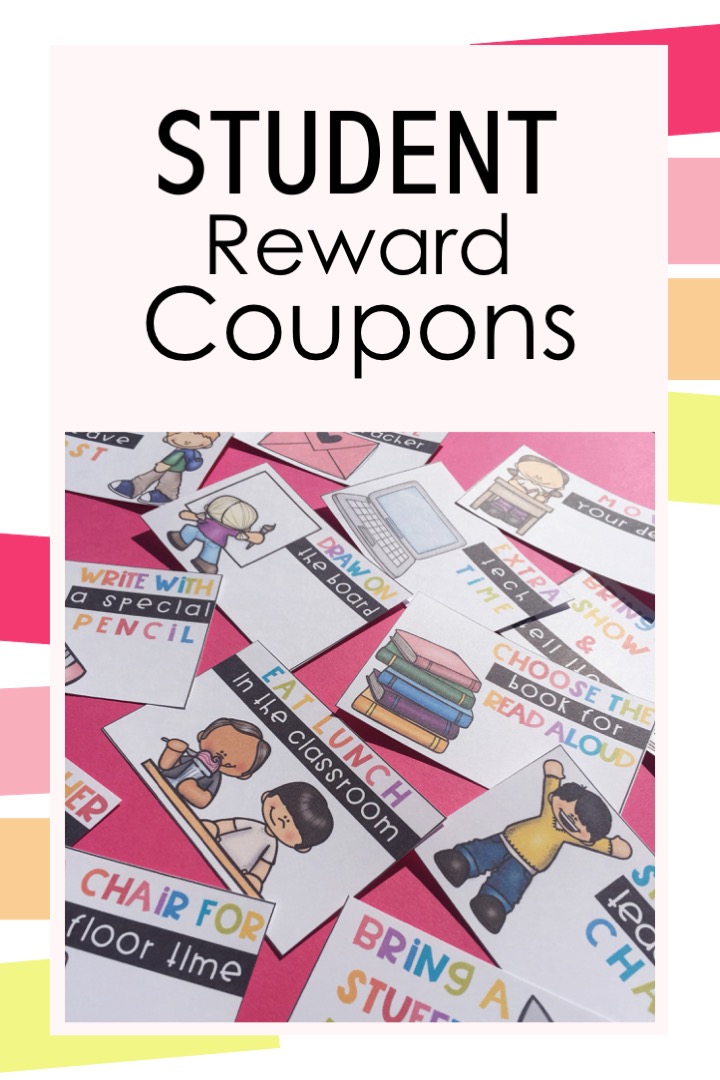
Students love these student reward coupons. They are a great part of my classroom behavior management plan.
Students love these rewards. And I love how I don’t have to buy dollar store toys. I even keep these reward coupons in a treasure box to make them feel even more special for students.
When students are ready to redeem their coupon, I put their coupon up on the board and write their name. Then I can keep things straight and remember what’s going on.
Find the Student Rewards Coupons and Good Choice Punch Cards I use in my classroom here.
When it comes to improving classroom behavior after winter break, a lot of components go into it. But behavior improves by setting high expectations, being consistent, following through, and having a thorough classroom behavior management plan.
For more tips on classroom management, read this blog post: Meaningful Classroom Management Techniques.

